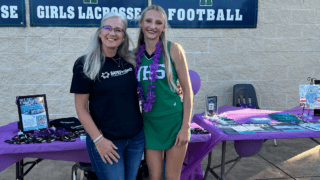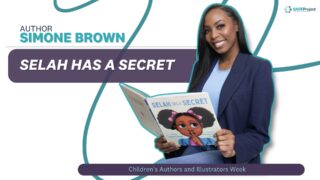In celebration of Women’s History Month this March, SAFE Project is sharing interviews with women making a difference in the fields of mental health, substance use, recovery, & fighting the stigma that accompanies it.
Tell us a little bit about yourself.
My name is Cristina Leal. I am a crisis counselor for Moreno Valley Unified School District, a school district out here in Southern California. I hold a school counseling credential, and I am also a licensed clinician. My main role is to consult on suicide assessments throughout our school district and I am also the crisis response lead. It’s only me for about roughly 32,000 students in our district. Before my current role as a district crisis counselor, I was a social emotional counselor at a high school. Before that, I was a substance use clinical therapist. That’s where my heart is, for sure.
How does this subject matter affect you on a personal level, knowing that you are responsible for so many people and having so much brought to you?
At first things were pretty slow because it was during distance learning. Last year the numbers started getting a little higher, and now we’ve exceeded last year’s numbers. It has become really draining. I usually average 25 to 30 calls per week. It has really put a highlight on what the education system doesn’t have: mental health support, which is so important and crucial. The reality is that our school counselors are not equipped to handle a lot of these situations. We need more professionals to be out in the schools and to ease the load on everyone else.
I think part of me being able to handle everything is, number one, getting my own therapy to not carry everything home with me. Going to the gym and unloading all that stress, sleeping well… all that also helps. When I first started in the field, I would cry every time I would come home and my brother would tell me, “I don’t think this is for you. Maybe you need to change your job.” And I’m like, “No, I know this is for me.”
What are the types of issues and concerns that kids bring to you?
A lot of it is suicide ideation, whether it’s students or their classmates that say, “Hey, so and so texted me last night saying ‘I want to kill myself. I just want to die.’” Parents call in saying, “My son is overwhelmed by what his friend is telling him.” Students make comments in their class that, “I just hate my life. I want to kill myself.“ My protocol is that we don’t take anything lightly. Whenever we hear a comment, we have to speak to the student. We have to make sure that they are safe. My goal is prevention. We do not want our students going from these thoughts to intent and planning, because we have had students in our district during distance learning who have completed suicide and that’s just really sad. Our youth are really suffering and they do it in silence.
There is a parallel here with speaking about suicidal thoughts and substance use, and whether addressing the issues then leads to actual occurrences.
I believe a lot of people say that to just put it away, brush it down under the rug, because people are scared and they also feel uncomfortable. Many people don’t know what to say when someone says, “Hey, I’m feeling really down. I’m having thoughts of hating my life and I just don’t want to live.” A lot of people don’t know what to say, or they’re scared to say the wrong thing.
A lot of people self medicate because they have some sort of pain. The opposite of addiction is connection. A lot of the times they don’t have that connection and contact, so they feel disconnected and it leads to suicidal thoughts, and it leads to substance use.
What are the substances used or reported the most often in your schools right now?
Right now at our school sites, a lot of weed. We have students that sell it on campus. A lot of our students also eat edibles. They don’t think anything hits them, so they just start eating more and more. Our students get hospitalized because they had too much, and they start getting so paranoid. Vaping has also become so big.
Especially when we talk about the wide range of ages from elementary all the way up through high school, what is that progression of anxiety and issues that the kids bring to the table?
For high school it’s relationships, hating their lives, even academics, like not getting into the college they wanted to. For middle school, a lot of it is expectations from the outside. There’s so much drama in middle school. What is really hard to understand is that our elementary school numbers have gone up so much. It’s really crazy to think kindergarten through grade six, our students are really struggling, and I don’t think they know how to put into words how they feel. If we as adults struggle with that, just imagine a little child.
Students don’t believe that they are loved. I’ve gone in and assessed a lot of our elementary school kids, and they write notes saying, “I hate my life. I wish I was dead.” I even have one right here with me. This is a middle schooler, and he wrote, “I’m a piece of shit that doesn’t deserve to live.”
A lot of our parents work late hours. They probably don’t see their kids. A lot of parents say, “I provide a roof over their heads. I give them what they want.” What’s often missing is that interaction or even just being told that they are loved or hugged. A lot of the things that we will call simple is not really simple for a lot of our kids these days.
That’s something that we’ve routinely heard lately, that there is so much more stress being reported than ever before. Is there something unique about society or children or parents today, or is it just being reported more?
They’re reporting it more. I’ve gone to so many trainings and I even went to my first annual Suicide Prevention Coalition Summit. One of the speakers, a professor and a researcher out at UCLA, Dr. Meza, said our numbers — like Latinos and BIPOC students — are not new. She just said there just wasn’t research on these students. The reality is there was no research done for us, and that’s why we’re all thrown back by how high the numbers are. But I believe they were always there.
I’ve learned so much good information. A lot of our first generation students that embrace their culture tend to be less suicidal than second or third generation, and it’s because they don’t have that connectedness. I never would have thought to do research on that. A lot of our teen girls tend to — when they have bad relationships with their parents — fight a lot, those students tend to be more suicidal. Part of it is cultural. I grew up with four brothers, no sisters. I was treated different than my brothers. I was able to do less than they were. I could just imagine how that can impact a student to feel different than. There are a lot of different factors that are finally getting highlighted. It’s no surprise suicide has become the second leading cause of death for our youth. We have a big mental health crisis and we don’t have enough support.
The opposite of addiction is connection. A lot of the times they don’t have that connection and contact, so they feel disconnected and it leads to suicidal thoughts, and it leads to substance use.”
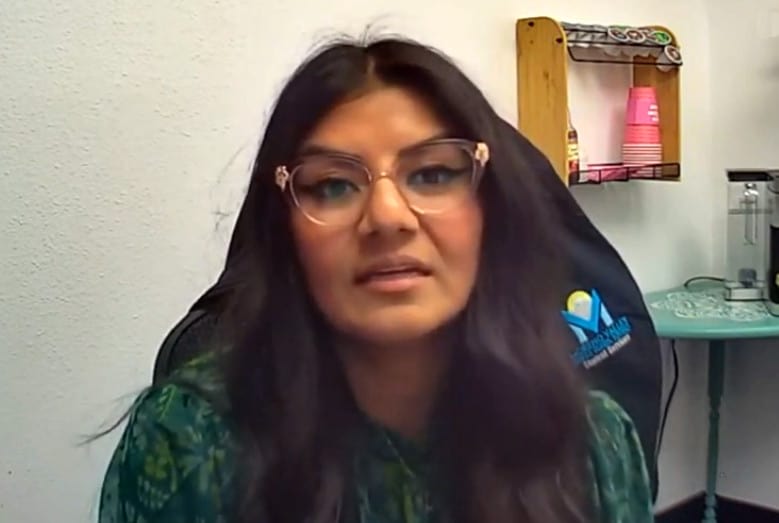
How do we get that support?
I do think we as an education system can do more, but our parents also need to be on board as well. We have parents that say, “I want my students to get services, but it has to be during school hours.” There’s only so much we can do during school hours depending on how intensive it is. Some of our students are intensive outpatient, so they have to go to a facility in a hospital around here three times a week to get either group or individual therapy for their high suicide ideation.
I get it. A lot of our parents work, so getting time off to take the son or daughter to the appointment is difficult. Grandparents often take the kids because they are the ones that are available and have the time. That is also a barrier. Whether it gets covered by their insurance or not, that’s another barrier. Does the student connect with the clinician? That’s another barrier. Sometimes you need to see what you want, what you don’t want, what kind of style, all of that. I tell them it’s like dating; not everyone’s going to fit. A lot of people go to their first session, they don’t like it, and they just stop going. There are just so many factors, and I wish I could make thousands of me so I could help and support everyone. It’s hard, but our families need to work close with us so we can get the best help and support.
You mentioned these different kind of barriers. How does stigma fit in with that?
Even when I was in school, no one talked about mental health or suicide. People just sucked it up and kept on going. Our parents forget that our times are so different. A lot of our parents don’t think there’s anything wrong. They say, “I know my son or daughter; they’re not going to kill themselves.” They say, “No, my son or daughter is fine; we go to church. No, my son or daughter is not crazy, because only crazy people go to therapy.”
We want youth to reach out when they need help, but even we don’t do that ourselves. We need to practice what we preach. We struggle with that. We have to do it, too.
Why do you do what you do? Why are you so committed to this?
Every time someone asks that, I get all emotional. The reason why I wanted to be a clinician is because I want whoever is across from me to feel seen. That’s not something that I got growing up. Of course my parents tried the best they could with what they had, but it still wasn’t enough. I always meet with students at the worst time when it’s a crisis, but that’s their cry for help. If we can connect our students with help and support and hopefully they get qualified therapists and medication if needed, I think that’s the goal. I want to help and show students that they are important because they don’t feel it and they don’t believe it.
People always ask me, “Why don’t you want to have kids?” I’m like, there’s so many kids to love already! We have so many kids to love! I want to leave a mark, say that I tried my best, and leave a dent. Education has always been about getting kids to a four year college and to be functioning adults, but my main goal is to help make emotionally intelligent students where they can talk about how they feel, reach out for help, and ask for help. At the end of the day, you could have that degree hanging on your wall, but are people really happy with the life that they’re living or are they just going through the motions?
If you could give one piece of advice for parents and one piece of advice for students, what would those be?
For parents, it’s to listen without judgment. By that I mean listen and don’t project whatever your son or daughter is saying about you, but just try to help and listen. The reason why I say that is because I’ve gone to therapy for many years and I get an “A-HA!” moment and I tell my mom, oh my gosh, mom, I know why I’m like this or this is like that. And my mom would get so upset with me, and I’m not saying she’s a bad parent. So now I tell mom, okay, I’m going to tell you something, but just listen. Don’t say anything back. Just listen.
For students, there’s so much more in the future. By that I mean right now can suck really bad. But if you can just keep on going and advocate for yourself; the help and support that you need, you can do it. To not be afraid to be different and to stand out. I just hope and wish students could be more self grounded in themselves to do what they want to do. A lot of times society tells us how to live, our parents tell us how to live, everyone tells us how to live. Life starts when you start just living for yourself. It took me many years in therapy to realize that, but I’m glad I got it now.
Additional Resources
-
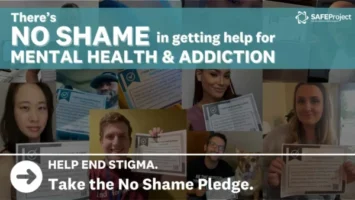 Page
PageJoin the No Shame Movement
Join our national movement to combat stigma, because there’s No Shame in getting help for mental health and addiction. -
 Resource
ResourceHow to Talk and Listen to Your Teen
When talking and listening to your teen about addiction, it's important to be present every step of the way. -
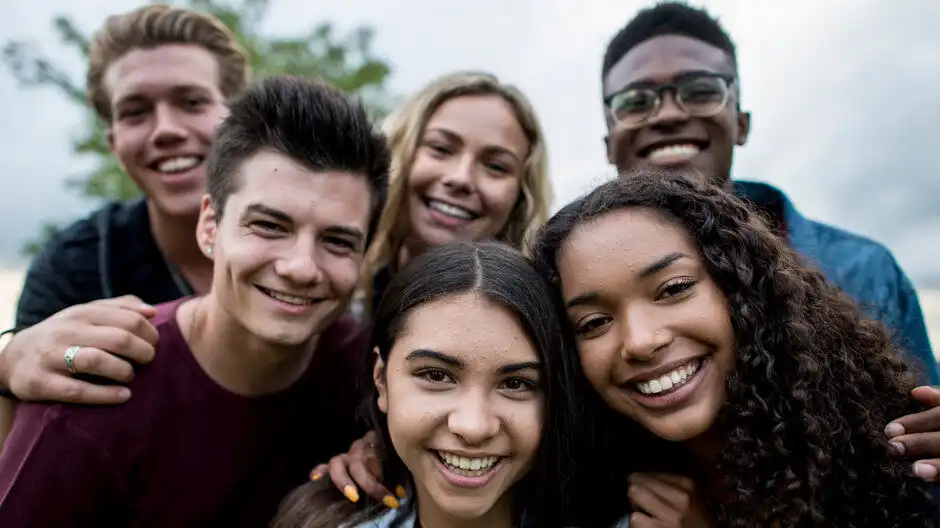 Page
PageSAFE Choices:
Serving Youth & Young AdultsPrioritizing the advancement of youth substance use prevention, intervention, treatment, and recovery.


